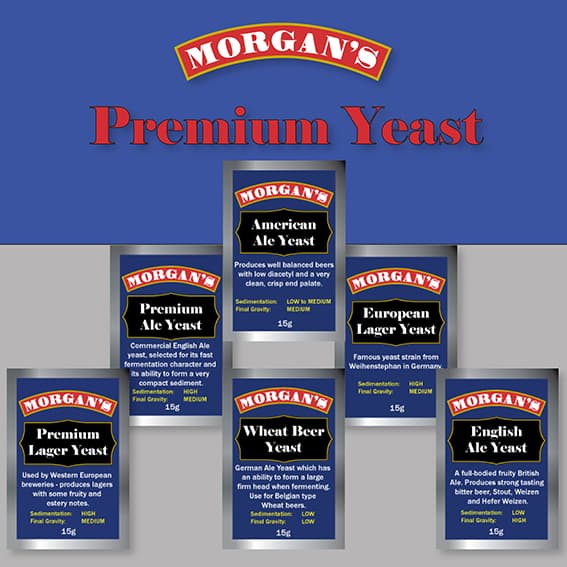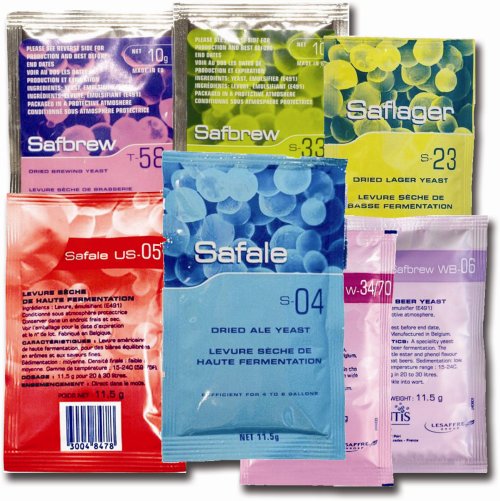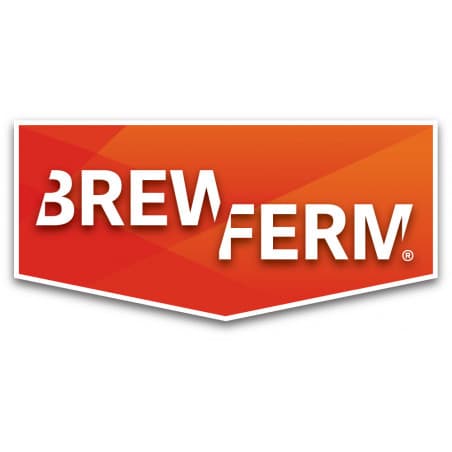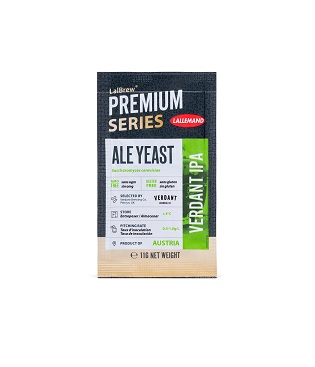Dried Beer Brewing Yeasts
Get the best yeast for your beer brewing with our selection of Dried Beer Yeast. Choose from a variety of strains for the perfect taste and aroma.
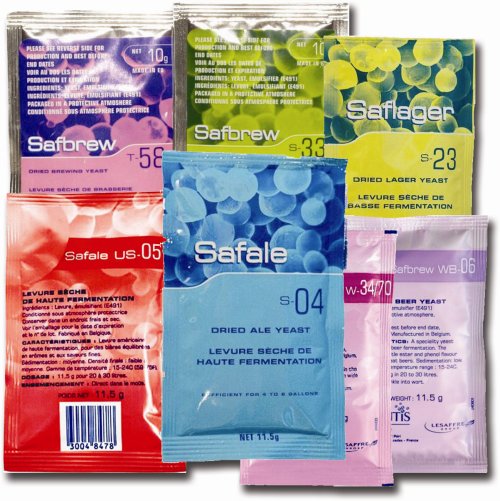
Beer Brewing Yeast
Is an essential ingredient in the beer brewing process, as it is responsible for converting sugar into alcohol and carbon dioxide. Choosing the right yeast for your beer can greatly impact the taste, aroma, and overall quality of the beer. With our selection of dried beer yeast, you can find the yeast that fits your needs, whether you are brewing a light lager or a rich stout. Our dried beer yeast is of the highest quality and will give you the best results, ensuring that your beer turns out just the way you want it.
The Essential Guide to Choosing the Right Brewing Yeast for Your Beer
Are you an aspiring homebrewer or a craft beer enthusiast looking to elevate your brewing game? Look no further than this essential guide on choosing the right brewing yeast for your beer. With the countless yeast options available, selecting the right one can be a daunting task. But fear not, we have got you covered!
In this comprehensive guide, we will walk you through everything you need to know about brewing yeast selection. From understanding the different types of yeast to their impact on flavour profiles and fermentation characteristics, we will equip you with the knowledge to make informed decisions.
Whether you are brewing a classic pale ale, a crisp lager, or a funky Saison, the choice of yeast can make or break your beer. We will delve into the nuances of ale yeast strains, lager yeast strains, and specialty yeast strains, helping you match your desired style with the perfect yeast.
So grab your brew kettle, sharpen your senses, and get ready to unlock the secrets of choosing the right brewing yeast. It's time to take your homebrews to the next level and impress your friends with your beer's exceptional flavour and complexity. Cheers!
The importance of choosing the right beer yeast
Are you an aspiring homebrewer or a craft beer enthusiast looking to elevate your brewing game? Look no further than this essential guide on choosing the right brewing yeast for your beer. With the countless yeast options available, selecting the right one can be a daunting task. But fear not, we have got you covered!
In this comprehensive guide, we will walk you through everything you need to know about brewing yeast selection. From understanding the different types of yeast to their impact on flavour profiles and fermentation characteristics, we will equip you with the knowledge to make informed decisions.
Whether you are brewing a classic pale ale, a crisp lager, or a funky Saison, the choice of yeast can make or break your beer. We will delve into the nuances of ale yeast strains, lager yeast strains, and specialty yeast strains, helping you match your desired style with the perfect yeast.
So grab your brew kettle, sharpen your senses, and get ready to unlock the secrets of choosing the right brewing yeast. It's time to take your homebrews to the next level and impress your friends with your beer's exceptional flavour and complexity. Cheers!
Types of Brew yeast: Ale yeast, Lager yeast, and Wild yeast
Brewing yeast is often referred to as the "unsung hero" of beer production. It plays a crucial role in the fermentation process, converting sugars into alcohol and carbon dioxide, while also imparting unique flavours and aromas to the final product. Choosing the right yeast is essential to achieve the desired beer style and flavour.
The choice of yeast can have a significant impact on the beer's characteristics, such as its body, mouthfeel, aroma, and taste. Different yeast strains produce different esters and phenols, which contribute to fruity, spicy, or earthy flavours and aromas. Additionally, yeast also influences the beer's attenuation (the degree to which it ferments sugars) and flocculation (the yeast's ability to clump together and settle at the bottom of the fermentation vessel).
By understanding the characteristics of different yeast strains and how they interact with other ingredients, you can create beers that are truly unique and reflective of your personal style as a brewer. Let's explore the different types of brewing yeast and their specific attributes.
Understanding yeast characteristics: Attenuation, flocculation, and flavour profile
When it comes to brewing yeast, there are three main categories: ale yeast, lager yeast, and wild yeast. Each type has its own distinct characteristics and is suitable for specific beer styles.
1. Ale Yeast
Ale yeast is the most commonly used type of yeast in homebrewing and craft beer production. It ferments at warmer temperatures (between 60°F and 75°F) and produces beers with a wide range of flavours, from clean and crisp to fruity and estery. Ale yeast strains are known for their ability to attenuate well, resulting in beers with a higher alcohol content. Some popular ale yeast strains include American Ale, English Ale, Belgian Ale, and Kölsch.
2. Lager Yeast
Lager yeast, on the other hand, ferments at cooler temperatures (between 45°F and 55°F) and produces beers with a clean, crisp, and smooth profile. Lager yeast strains are known for their ability to ferment sugars more slowly and at lower temperatures, resulting in a longer fermentation period. This slow fermentation process creates a beer with a more refined and subtle flavour profile. Some popular lager yeast strains include German Lager, Czech Pilsner, and Vienna Lager.
3. Wild Yeast
Wild yeast, also known as spontaneous or souring yeast, is often used in the production of sour beers or lambics. Unlike ale and lager yeast, wild yeast is not a specific strain but rather a collection of various yeast and bacteria that occur naturally in the environment. These wild yeast strains can create complex and tart flavors, giving sour beers their distinctive character. However, working with wild yeast requires careful control and monitoring to avoid contamination and off-flavors.br/>
Factors to consider when choosing brewing yeast: Beer style, desired flavours, and fermentation temperature
To choose the right brewing yeast, it's essential to understand the three key characteristics: attenuation, flocculation, and flavour profile.
1. Attenuation
Attenuation refers to the yeast's ability to ferment sugars and convert them into alcohol. It is expressed as a percentage, with higher percentages indicating a more complete fermentation. Yeast strains with high attenuation will result in drier beers with a lower residual sweetness, while strains with low attenuation will leave more unfermented sugars, resulting in sweeter beers.
2. Flocculation
Flocculation refers to the yeast's ability to clump together and settle at the bottom of the fermentation vessel. High flocculating yeast strains will form compact sediment, resulting in clear beers, while low flocculating strains will remain in suspension, resulting in hazy or cloudy beers. The desired level of flocculation depends on the beer style and personal preference.
3. Flavour Profile
Each yeast strain has its own unique flavour profile, which can range from clean and neutral to fruity, spicy, or even funky. These flavours are primarily produced during fermentation, as the yeast metabolizes sugars and releases various compounds. Understanding the flavour characteristics of different yeast strains is crucial to achieving the desired beer style and flavour profile.br/>
When selecting brewing yeast, several factors should be taken into consideration to ensure the best possible outcome for your beer.
1. Beer Style
The first factor to consider is the beer style you intend to brew. Different beer styles require specific yeast characteristics to achieve their signature flavours and aromas. For example, a classic IPA may benefit from a yeast strain that produces fruity and citrusy esters, while a traditional German Hefeweizen relies on a yeast strain that imparts banana and clove flavors.
2. Desired Flavours
Consider the specific flavours and aromas you want to highlight in your beer. If you prefer a clean and crisp profile, a lager yeast strain might be the best choice. On the other hand, if you want to experiment with fruity or spicy flavours, an ale yeast strain with those characteristics would be more suitable.
3. Fermentation Temperature
The fermentation temperature plays a critical role in yeast performance and flavour development. Different yeast strains have optimal temperature ranges at which they thrive. It's essential to choose a yeast strain that can tolerate and perform well within your fermentation setup. Proper temperature control ensures that the yeast produces the desired flavours and avoids off-flavours caused by excessive heat or cold.
Tips for storing and handling brewing yeast
Now that you understand the different types of yeast and their characteristics, let's explore some popular brewing yeast strains and their specific attributes.
1. American Ale Yeast
American Ale yeast is known for its clean and neutral flavour profile, making it versatile for a wide range of beer styles. It attenuates well and produces a subtle fruitiness, making it suitable for American Pale Ales, IPAs, and Amber Ales.
2. Belgian Saison Yeast
Belgian Saison yeast is famous for its ability to create complex and spicy flavours. It produces esters and phenols that result in fruity, peppery, and earthy notes, making it ideal for brewing Saison's, Belgian Tripels, and Wit biers.
3. German Weizen Yeast
German Weizen yeast is specifically designed for brewing wheat beers, such as Hefeweizens and Dunkelweizens. It produces distinct banana and clove flavours, creating the classic Bavarian wheat beer profile.
4. English Ale Yeast
English Ale yeast strains are known for producing beers with a malty, fruity, and sometimes nutty character. They are commonly used in British beer styles such as Bitters, Porters, and Stouts.
5. Czech Pilsner Yeast
Czech Pilsner yeast is essential for brewing authentic Czech-style Pilsners. It ferments cleanly, with minimal ester production, resulting in a crisp and refreshing beer with a distinctive hop character.
These are just a few examples of the vast array of brewing yeast strains available. Experimenting with different strains is part of the fun of homebrewing and allows you to create unique flavour profiles that suit your taste.
Troubleshooting common yeast-related issues
Proper storage and handling of brewing yeast are crucial to maintain its viability and performance. Here are some tips to ensure you get the most out of your yeast:
1. Refrigeration
Most brewing yeast strains should be stored in the refrigerator to prolong their shelf life. Yeast stored at colder temperatures will remain dormant and stay viable for an extended period. Make sure to keep the yeast sealed in an airtight container to prevent contamination.
2. Freshness
Always check the yeast's expiration date before use. Using expired yeast can lead to poor fermentation and off-flavours. It's best to purchase fresh yeast from reputable suppliers.
3. Starter Cultures
For high-gravity or lager beers, it is recommended to create a yeast starter culture before pitching the yeast into the main fermentation vessel. This helps ensure a healthy and active yeast population, improving fermentation performance.
4. Sanitation
Maintaining proper sanitation throughout the brewing process is vital, especially when handling yeast. Clean and sanitize all equipment, including fermentation vessels, airlocks, and yeast propagation tools, to prevent contamination and off-flavours.
Conclusion: Choosing the perfect brewing yeast for your beer
Even with proper brew yeast selection and handling, issues may still arise during fermentation. Here are some common yeast-related problems and how to troubleshoot them:
1. Slow or Stuck Fermentation
If fermentation seems to be progressing slowly or has come to a halt, check the fermentation temperature. Yeast activity can be affected by temperature fluctuations. Ensure that the temperature remains within the recommended range for the yeast strain.
2. Off-Flavours
Off-flavours in beer can be caused by various factors, including improper yeast handling, contamination, or excessive fermentation temperatures. Carefully assess your brewing process and sanitation practices to identify any potential sources of off-flavours.
3. Over carbonation
If your beer is over carbonated and has excessive carbonation levels, it could be due to bottling too soon or using too much priming sugar. Ensure that the beer has completed fermentation before bottling and accurately measure the amount of priming sugar used.
Other Yeasts
Along with the dried beer yeasts we have a range of others yeasts such as

